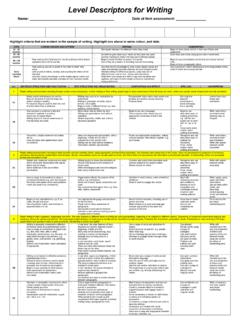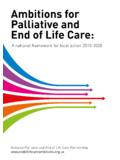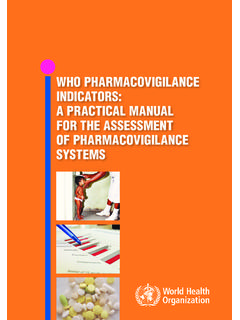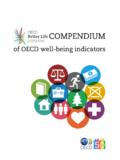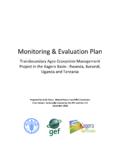Transcription of Section 6: Attainment and progress for pupils with …
1 The national Strategies Attainment and progress for pupils with SEN/LDD. Attainment and progress for pupils with SEN/LDD. Introduction The overarching strategic aim of the national Strategies is to continue to raise standards and rates of progress for children and young people in all phases and settings through increasing personalisation of learning. This will be supported by the development of high quality, well planned teaching, through a pedagogy for all which addresses individual and group needs, interests and aspirations within the particular context of the core subjects and Early Years'. curriculum. Most pupils with special educational needs, learning difficulties and disabilities (SEN/LDD), including those in special schools, are able to reach national expected levels.
2 For the majority of those who do not, national Curriculum levels and sub-levels still offer a suitable framework for assessment, planning and the evaluation of Attainment and progress . For a much smaller number of pupils working below level 1 of the national Curriculum, the use of P levels (along with other assessment/planning frameworks linked to the Every Child Matters (ECM) five outcomes) enables schools to measure progress , set targets and evaluate the impact of their provision for these pupils . The drive to improve the rates of progress made by all children and young people is inclusive of those with SEN/LDD working at the lower levels of the national Curriculum and P levels. These expectations are further emphasised in The Children's Plan and the Government's 2020 Vision for Learning.
3 Effective strategic analysis and interpretation of SEN/LDD data can have a direct impact in the classroom on learning and teaching for all pupils . To ensure this the headteacher and the senior management team, should always consider: what criteria they use to determine whether pupils are underachieving or are identified as having SEN/LDD. what key indicators and data sets they need to monitor pupil progress how they assess, set targets, track and evaluate the rates of progress of pupils with SEN/LDD. what is good progress for pupils with SEN/LDD in their school, which should include some understanding that pupils , with complex needs, might be working within the P levels and may well be making lateral progress even when linear (or hierarchical) progress is not evident how the work of the SENCO/INCO aligns with the work of subject leaders and departments in analysing and interpreting data in order to identify those pupils whose rates of progress are causing concern and then take action to resolve those concerns how they ensure that Wave 1 provision and targeted Wave 2 and 3 interventions are appropriate to the learning needs of pupils with SEN/LDD and effective in ensuring the intended progress .
4 national Expectations At the end of each key stage there is an expectation that all pupils should reach a certain level of skills, knowledge and understanding in each subject. 00709-2008 PDF-EN-02 Crown copyright 2008. The national Strategies Attainment and progress for pupils with SEN/LDD. Stage Expected Expected national Curriculum Attainment at levels the end of a key stage Key Levels 1 to Level 2 (By age 7). Stage 1 3. Key Levels 2 to Level 4 (By age 11). Stage 2 5. Key Levels 3 to Level 5 or 6 (By age 14). Stage 3 7. So what does this mean for pupils who do not reach expected levels, some of whom may be labelled as having SEN/LDD? For example, in 2007, of Key Stage 2 pupils attained a level 2 or below in English and maths combined and of Key Stage 3 pupils attained a level 3 or below in both English and Maths.
5 The DCSF provides a further breakdown of level 2 and 3 Attainment by SEN School Action, School Action Plus and pupils with a Statement of SEN linked to their SEN statistical release. How do we raise the level of performance for all pupils including those working below national expectations? The analysis of pupil -level data can offer some clues to where solutions may lie and certainly helps us to a much deeper understanding of individual and group performance. Effective schools and LAs therefore make extensive use of pupil and cohort level data. They use prior Attainment (which is nationally validated) and chronological age as a starting point for benchmark comparisons and setting targets (rather than categories of need or stages' of SEN, which vary from school to school and from one LA to another).
6 They also track outcomes and use this information to evaluate the impact of personalised provision. Progression Guidance Project for SEN/LDD. Between 1 April 2008 and July 2009 the Department for Children Schools and Families (DCSF) are working in collaboration with the national Strategies to develop progression guidance for pupils with SEN/LDD including those working below level 1 of the national Curriculum. This project focuses solely upon pupil progress in English, maths and science but nevertheless recognises that many competencies lie outside the remit of the project;. competencies that have a significant impact on the life chances of pupils with SEN/LDD. Work on these wider outcomes is being taken forward by the DCSF, through the separate but linked development of school-level indicators on the ECM outcomes and guidance to schools on their duty to promote the wellbeing of their pupils .
7 The progression guidance project is designed to support the development of a clear understanding of what constitutes good progress for pupils with SEN/LDD within these subject areas. 00709-2008 PDF-EN-02 Crown copyright 2008. The national Strategies Attainment and progress for pupils with SEN/LDD. Effective use of data Local authorities (LAs) and schools strategically manage a range of Attainment and progress data for pupils with SEN/LDD to enable them to evaluate how well pupils are doing in relation to their prior Attainment and in comparison with the local and national picture. Effective use of data also enables schools and LAs to determine appropriate provision to secure the progression of pupils working at very low levels of the national Curriculum and P.
8 Levels. Data collection and analysis are essential elements in the development of a more forensic approach to the removal of barriers, raising of expectations and supporting the setting of realistic but stretching targets. Effective use of data at school, LA and at a national level are covered in more detail below. School level SEN/LDD. Local authority SEN/LDD data national indicators and data sets for Further information on the use of data for SEN/LDD can be found in: Leading On Inclusion: Using and Understanding data Maximising pupil progress : Ensuring the progress of pupils with SEN Using data School level data for SEN/LDD. In addition to national indicators, schools and LAs make local decisions about which key indicators and data sets they will use to evaluate the impact of their provision and its impact upon the progress of pupils with SEN/LDD.
9 They use data reports and analyses from packages such as RAISE online, the FFT. supplement, other commercial packages and their own internal data sets of pupil performance in order to: evaluate the impact of provision on the outcomes for pupils with SEN/LDD. complete an Ofsted SEF which provides the evidence base for how well pupils with SEN/LDD are progressing evaluate progress towards existing targets for pupils with SEN/LDD. establish stretching and challenging targets for the future make informed decisions about the deployment of SEN/LDD resources to support appropriate personalised provision commission and quality assure provision both inside and outside the LA area. In addition a school can judge how effectively it manages its provision by considering the five ECM outcomes against specific aspects of school life and its impact on pupil outcomes.
10 The West Midlands Regional Partnership has developed a supportive Outcomes Framework linked to the five ECM outcomes. The Council for Disabled Children is also working on behalf of the DCSF to identify appropriate indicators, linked to the five areas, for disabled children. 00709-2008 PDF-EN-02 Crown copyright 2008. The national Strategies Attainment and progress for pupils with SEN/LDD. In the current absence of national benchmarked data for pupils working below the level of the test and at P Levels, schools need to ensure that their internal systems for teacher assessments and end of key stage tests, moderation and data analyses are robust and can evidence how pupils are progressing based on their prior Attainment and age. Effective schools are able to evidence the progress of pupils working at the lowest P levels using a variety of holistic measures which take into account the fact that progress for these pupils may be uneven, lateral, or may concentrate on improving the quality of life and minimising skills loss for those with degenerative conditions.
